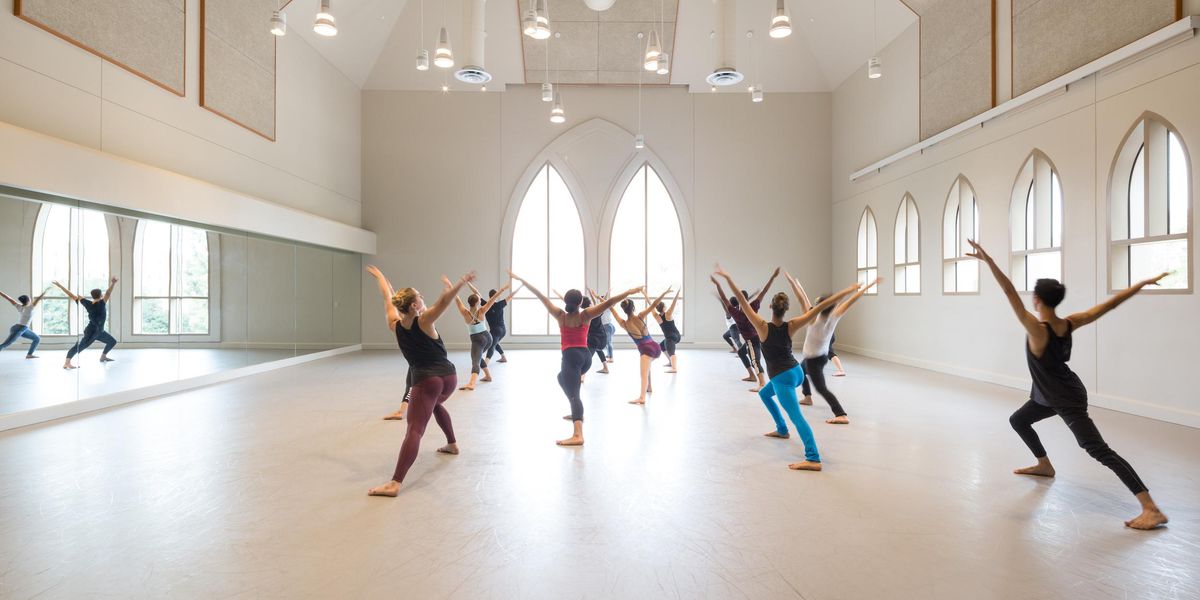Making It Happen: Theory Meets Practice at Yale
Last December, an unlikely headline appeared on the front page of the Yale Daily News: “Yale Dance Leads New Chapter in Cunningham Legacy.” The article described how the Yale Dance Theater, a year-old troupe founded and directed by professor Emily Coates, would be the first entity to license a Merce Cunningham work after his company disbanded. “What’s wonderful is that Yale students caught the importance of this,” says Coates. She feels that the visibility of Yale Dance Theater, in combination with the school’s dance studies courses, “makes the presence of dance here impossible to ignore.”
That wasn’t always the case. When Coates arrived at Yale as an undergraduate in 2003, a dance curriculum didn’t exist. Drawing from her career with New York City Ballet, Baryshnikov’s White Oak Dance Project, Twyla Tharp, and Yvonne Rainer, she completed an independent project in performance studies. After graduating, she was offered a job to help develop a dance studies program at Yale. Coates now serves as director of that program and artistic director of the World Performance Project, an interdisciplinary research initiative. In 2010, prodded by associate dean of the arts Susan Cahan, Coates submitted a proposal to form a faculty-directed company focused on the intersection of performance and research. Soon after, Yale Dance Theater was born.
Coates describes YDT as “White Oak meets Yale,” adding that the repertory model was inspired by her experience working with Baryshnikov. “I was able to learn about the cutting edge of experimental dance through his commissions, and it always felt to me that that format was a kind of research project,” she says. “I wanted to take that deep curiosity and pull it into a Yale context.”
YDT differs from other dance groups on campus in its rigor—the 18 members rehearse for six hours every week—and in that it is not student-run. “I really wanted a situation in which they would have mentorship,” says Coates. Each session begins with a warm-up class in the choreographer’s style to help students improve their technique. (Yale does not offer a wide range of purely technique classes; many of its courses integrate studio practice with dance history and composition.) And although it is extra-curricular, the initiative is designed to supplement Yale’s dance studies coursework. “It was like the pages of our books coming to life for us, which was really magical,” says junior Amymarie Bartholomew of learning Twyla Tharp’s Eight Jelly Rolls in the pilot program last spring.
For the 2012 project, Coates invited four generations of Cunningham dancers (Meg Harper, Neil Greenberg, Patricia Lent, and Jennifer Goggans) to stage an excerpt from Roaratorio and create a MinEvent of choreography from the 1970s to 2000s, to be performed on April 27. This multigenerational approach, Coates says, “allows the students to ask questions like, How does dancers’ knowledge change? How does a choreographer’s style change? And how can we reconstruct a work in a way that brings together these voices harmoniously?”
YDT members also keep a group blog, wrestling with these ideas in writing. “You’re learning in your body but also trying to tap some interesting thoughts and even—not to exaggerate—revelations about the process,” Bartholomew says. “It’s a fabulous example of digging into both theory and practice.”
Coates’ focus so far has been to expose students to seminal American dancemakers who will challenge them both physically and intellectually. But in the future she hopes to juxtapose retrospectives with commissions of new works in the vein of White Oak. “It’s been wonderful to see it grow in only two years,” she says of YDT. “My feeling now is, Think of where we could go.”
Yale student Cecillia Xie and former Cunningham dancer Jennifer Goggans. Photo by Zoe Gorman, Courtesy Yale Dance Theater.




